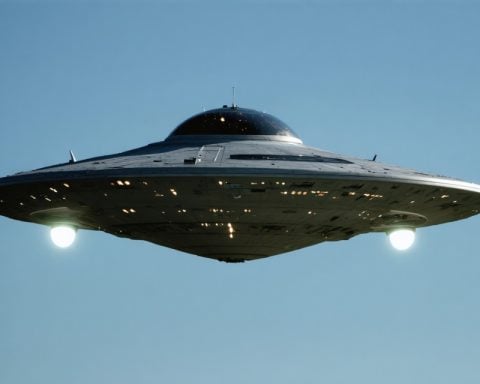The Indian Space Research Organisation (ISRO) is gearing up for a monumental launch, set for January 29, 2025, at 6:23 AM, which will see the launch of the NVS-02 satellite—a vital component of India’s evolving satellite navigation system. This historic event marks ISRO’s 100th mission, showcasing its advancements from previous sub-orbital flights.
The satellite will be propelled into space by the Geosynchronous Satellite Launch Vehicle Mk-II (GSLV), specifically the GSLV-F15/NVS-02 Mission. The NVS-02 will play a pivotal role within the Navigation with Indian Constellation (NavIC) framework, representing India’s homegrown version of a global navigation satellite system, akin to the widely utilized GPS.
This mission signifies a substantial enhancement in India’s satellite navigation capabilities, reflecting ISRO’s commitment to developing a robust and reliable satellite network over the years. The NVS-02 satellite is considered an integral part of India’s navigation infrastructure.
As the 17th flight of the GSLV, this endeavor highlights India’s technological prowess, including the use of indigenous cryogenic engines. With the GSLV-F15 mission, ISRO is not only celebrating its achievements but also extending India’s footprint in space exploration and navigation technology, promising exciting advancements for the future.
Beyond the Launch Pad: The Broader Impact of India’s Advancements in Space
The launch of the NVS-02 satellite by the Indian Space Research Organisation (ISRO) on January 29, 2025, is poised to have significant implications that extend far beyond the confines of space technology. At the forefront, this mission marks a critical moment in enhancing India’s position within the global space race. ISRO’s achievements contribute to the broader geopolitical landscape, offering India a technological edge that can be translated into international influence and cooperation in space-related initiatives.
Moreover, the introduction of the NVS-02 as part of the Navigation with Indian Constellation (NavIC) system is expected to bolster not only military applications but also civilian uses that permeate daily life. Industries such as agriculture, transportation, and disaster management stand to benefit significantly from enhanced navigational accuracy and reliability. The global economy increasingly relies on satellite technology, and India’s advancements may provide a competitive advantage in increasingly crowded markets.
From an environmental standpoint, improved navigation systems promise to facilitate better resource management and monitoring. While the launch frequency increases, ISRO must also navigate the challenges of space debris management, as the proliferation of satellites could lead to increased risks for both current and future missions.
As space exploration continues to evolve, the implications of ISRO’s mission are far-reaching. They signify a renewed commitment to international collaboration, technological innovation, and sustainable practices in the quest for knowledge beyond Earth.
India’s Space Frontier: The Game-Changing NVS-02 Satellite Launch
Introduction
The Indian Space Research Organisation (ISRO) is poised to achieve a significant milestone in space exploration with the launch of the NVS-02 satellite. Scheduled for January 29, 2025, at 6:23 AM, this launch will serve as ISRO’s 100th mission and represents a leap forward in India’s satellite navigation capabilities.
Key Features of the NVS-02 Mission
1. Launch Vehicle: The satellite will be launched aboard the Geosynchronous Satellite Launch Vehicle Mk-II (GSLV), specifically the GSLV-F15/NVS-02 Mission.
2. Navigation System: NVS-02 will enhance the Navigation with Indian Constellation (NavIC), India’s indigenous satellite navigation system, which offers services similar to those provided by GPS.
3. Technological Breakthroughs: This mission showcases the use of indigenous technology, particularly the cryogenic engine, reinforcing India’s self-sufficiency and technological advancements in space.
Benefits and Use Cases of NVS-02
– Enhanced Navigation Services: The NVS-02 will provide improved accuracy and reliability for a variety of applications, including transportation, telecommunications, and disaster management.
– Regional and Global Reach: Although designed primarily for India, NavIC is expected to offer services to neighboring countries, enhancing regional cooperation.
– Support for Agriculture and Mining: The satellite’s capabilities can greatly aid sectors like agriculture by providing precise information related to land and crop conditions, promoting sustainable farming practices.
Pros and Cons of the NVS-02 Launch
Pros:
– Indigenous Development: Reduces reliance on foreign technologies, promoting domestic satellite manufacturing.
– Improved Navigation: Offers more accurate positioning over traditional GPS in India and neighboring regions.
Cons:
– Initial Limitations: While enhancing coverage, the system may initially have limited availability compared to globally established GPS systems.
– Cost: The investment in developing and launching such satellites can be significant, raising questions about budget allocation in a developing economy.
Controversies and Predictions
Despite ISRO’s remarkable progress, discussions about the potential militarization of the technology have sparked debates over the implications of satellite navigation systems. As India continues to advance, experts predict that the NVS-02 will pave the way for further innovations in satellite technology, enhancing national security measures and economic development.
Market Analysis and Trends
The launch of NVS-02 is not just a technical achievement but also indicative of current market trends in space technology. The global satellite navigation market is expected to expand significantly, driven by the increasing demand for precise navigation and robust communication systems. As countries invest in similar technologies, India’s proactive approach with the NavIC system positions it as a competitive player in the global arena.
Conclusion
The upcoming launch of the NVS-02 satellite is a testament to ISRO’s expertise and commitment to advancing India’s space endeavors. As it moves towards its launch date, anticipation builds around the satellite’s impact on navigation technologies and related sectors, marking a new chapter in India’s space exploration narrative. To learn more about ISRO and its missions, visit ISRO’s official site.


















